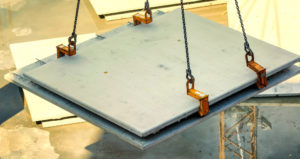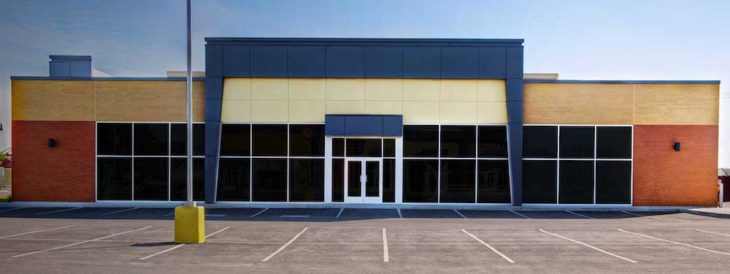
On a traditional construction project, a building is constructed entirely on-site. The ground is excavated, the concrete is poured, the framing is installed, etc. Pretty much all of the labor is done on the owner’s property. Anyone who contributes to these property improvements generally has the right to file a lien if they don’t get paid. But in the last 15 or 20 years, there has been a huge shift toward prefabricated construction (or prefab for short). On these projects, the majority of the work is done before the building ever gets to the property where it will reside. Since a mechanics lien is filed on real property, prefabrication raises an important payment question: Do prefab construction companies have lien rights for labor performed off site?
Prefab construction is hot
In an industry obsessed with shaving costs without sacrificing quality, it’s easy to see why construction is enamored with prefabrication. On these projects, some or most of the physical structure is constructed in a warehouse or other location off-site. It’s then transported to the property for installation.
While prefab construction is exciting, the industry has already had its share of growing pains. Forest City Ratner (FCR), the developer of the world’s tallest prefabricated steel building, got out of the modular business after completing the project. Forest City claimed that modular construction would allow them to build high-rises at 70% of the cost of a traditional building. Unfortunately, the project was beset by delays. The developer and the GC on the project, Skanska USA Building Inc, both blamed each other, with disputes over cost overruns and compliance with New York’s lien law.
Types of prefabricated construction
Over the years, as new technology and processes have emerged, different styles of prefabricated buildings have emerged.
Mobile homes, also called manufactured homes, are among the most widely known. These residential buildings resemble a trailer, and are typically built in their entirety before they are transferred to their resting place. Performing work on a mobile home gets more complicated because the owner of the mobile home often rents the property that it sits on.
Modular construction has taken off in recent years as a cost-effective way to quickly erect a structure, even a commercial building. Rather than completing the entire structure in advance, modular building involves constructing certain elements or sections before transporting to the property for assembly. All of the pre-built pieces are put together, sort of like a giant piece of Ikea furniture.
Panelized construction is similar, but involves building the frame or walls in advance — essentially, giant panels that are connected on the jobsite.

The challenge of getting paid for prefab work
Prefabricated construction is terrific, and there’s plenty of reasons for anyone in the industry to love this trend. But it’s also critical for contractors and suppliers to understand the legal rules behind the scenes, and what those rules mean for them if they don’t get paid.
The biggest problem with payment rights on a prefabrication project is that the majority of labor and materials aren’t technically incorporated into the property until they are actually installed. Because mechanics lien laws apply to works of improvement on real property, it’s easy to see why a modular builder would run into a snag here. They don’t improve the property until after a majority of the structure is finished being built.
Mechanic lien rights for off-site work
Back in 2012, I argued a case before the Washington State Court of Appeals in Blue Diamond Group Inc v. KB Seattle, Inc.. The underlying issue was whether a construction manager could file a mechanics lien. The court ultimately held they could not largely because a construction manager doesn’t do work on the jobsite. Here is a relevant quote from the decision:
As this court observed in Pacific Industries, Inc. v. Singh, management and coordination services do not fall within the statutory definition of “labor,” absent a clear showing that the labor was provided at the improved property. Here, there is nothing to show that any “labor” was performed at the site of the improved property.   In fact, an affidavit from Blue Diamond expressly disclaims “any physical work on the project.”
During oral arguments, the on-site/off-site debate raged with the justices specifically focusing on the fact that construction managers always do their work off-site. As counsel for the construction management firm, I highlighted that general contractors can lien for services they perform off-site (such as coordinating and other overhead expenses). Ultimately, however, the court found that the off-site work was not lienable. Labor, in other words, was not “labor” as contemplated by Washington’s lien statute unless it happened “at the site of the improved property.”
With prefabricated bridges, buildings, homes and similar manufactured items, a large amount of the labor performed for the project is performed off-site. So, what would happen if the Washington courts were faced with one of these prefabricated construction situations?
With prefabricated bridges, buildings, homes and similar manufactured items, a large amount of the labor performed for the project is performed off-site, preparing the structures for installation on-site. Insofar as the portion of labor required to install the structures at the job site, there are clear lien rights for this. The question is more difficult to answer for the portion of work performed off-site. If the Blue Diamond Group case is any indication, Washington courts would not allow for recovery of the off-site work.
Other states may not be so strict. In Louisiana, for example, the definition of “work” is quite broad, and would likely allow recovery for off-site work eventually installed at the job site.
Potential lien protection for prefab construction
The work that is performed off-site might not be lienable in some states, since the labor and work is not “furnished” to the jobsite. It’s all provided before the building ever makes it to the property. However, once the prefabricated item is shipped to the jobsite and installed there, is it then considered a piece of material that is furnished? And what is the value of the material furnished?
For those states that restrict recovery for labor expenses provided off-site, this may be one way to get prefabricated items mechanics lien protection. If the item is shipped to the jobsite and installed, it should be considered a material just like a piece of lumber or a brick. The company who fabricated the item would be considered a material supplier.
If a court adopted this argument, there would be a few issues to consider.
Material value
First, what is the value of the material? The mechanics lien rights available here may come down to how the construction contract for the prefabricated item is written. What is the subcontractor, prime contractor or property owner paying for: The material in one lump sum, or are they paying for the labor off-site to construct the material?
This may seem like semantics, but I can definitely see a court latching onto that nuance in determining the value of the material itself.
Specially fabricated materials
There is a good argument that prefabricated modules or structures are actually specially fabricated materials, and deserving of this special class of lien protection. Typically, materials are only protected by mechanics lien laws if they are physically incorporated into the project. However, some states give special protection to suppliers of custom materials, because if they aren’t used the supplier would be stuck with them. This may be another category for the prefabricated buildings to qualify for lien protection.
However, those working on prefabricated structures must be aware that if they are considered a specialty material fabricator, they may be subject to special rules. In Texas, for example, there’s an additional Notice of Specially Fabricated Materials required to maintain lien rights.
Lien rights for prefab construction still a question mark
When it comes to lien rights, each state’s laws will be interpreted differently. There is ultimately very little case law on this particular question. With the rise of prefabricated construction, however, we can expect to see courts being called upon to make a decision.

